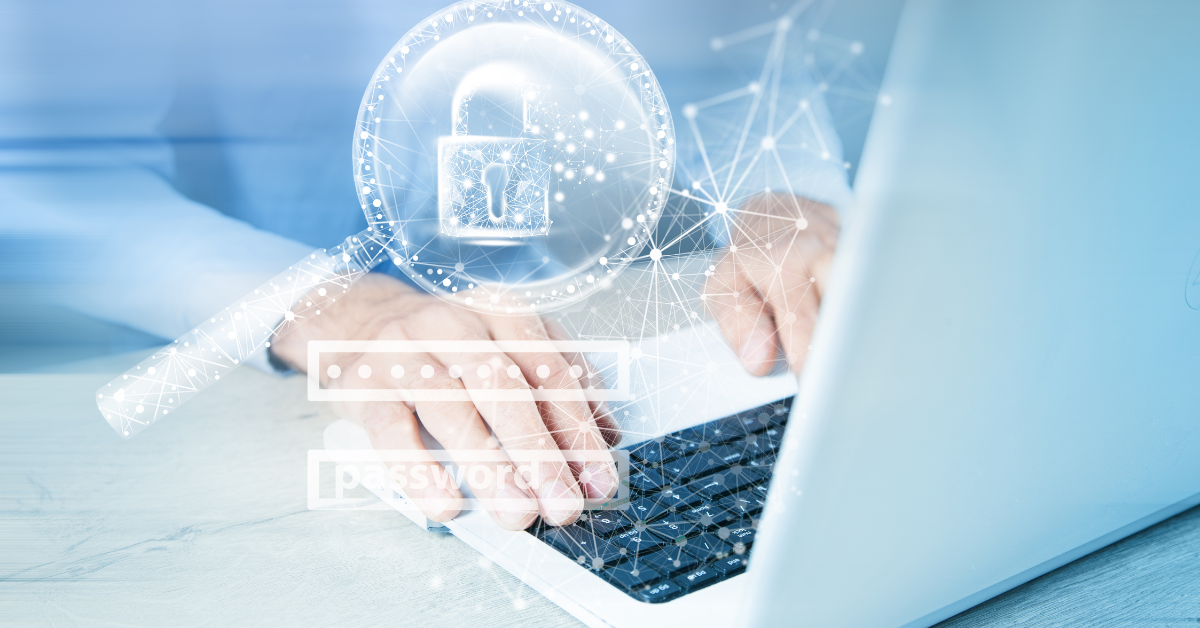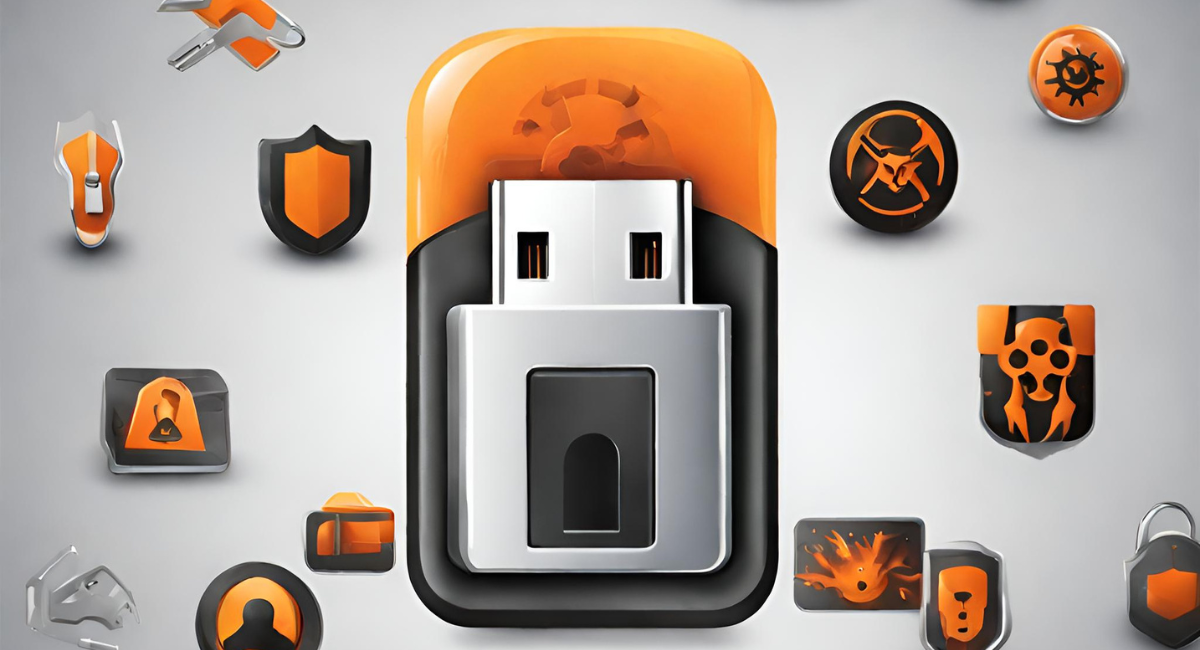USB drive protection is crucial for safeguarding your data. These portable devices, while convenient, pose security risks. Use strong password encryption to secure your USB drive, employ built-in OS encryption tools (BitLocker for Windows, FileVault for Mac), or consider hardware-encrypted drives with PIN or fingerprint authentication. Regularly back up your data to the cloud or external drives and use antivirus software to scan for malware. Disable autorun to prevent the automatic execution of malicious programs and be cautious when using USB drives on public computers. Physically protect your drive, handle it with care, and create backups. Safely eject your drive to prevent data corruption.
Why Do You Need USB Protection?

USB drives, also known as flash drives or thumb drives, have transformed how we handle data. They are compact, versatile, and can store vast amounts of information. However, their convenience comes with inherent vulnerabilities, making USB drive protection imperative. Here are some reasons why you need to prioritize USB drive security:
- Data Security: USB drives often contain sensitive and confidential information, such as personal documents, business data, or financial records. This data can be vulnerable to theft, unauthorized access, or malware attacks without proper protection.
- Preventing Unauthorized Access: USB protection, including password encryption and hardware-based security features, helps prevent unauthorized individuals from accessing your data. This is crucial in case your USB drive is lost or stolen.
- Malware Defense: USB drives can easily become carriers of malware or viruses. When you plug a compromised USB drive into your computer, it can infect your system. Effective USB protection includes scanning for malware and preventing its spread.
- Data Loss Prevention: USB drives are susceptible to physical damage, accidental deletion, or corruption. Proper protection measures, such as regular backups and secure storage, can help prevent data loss.
- Protecting Personal Privacy: USB drives often contain personal photos, videos, and documents. USB protection ensures that your private and intimate moments remain confidential, even if the drive is accessed by someone else.
- Business Continuity: In a professional setting, losing critical data stored on USB drives can disrupt business operations. USB protection helps maintain business continuity by safeguarding vital information.
- Preventing Data Leakage: USB drives can inadvertently leak sensitive information. USB protection helps control and monitor the use of USB drives within an organization to prevent data leakage.
Protection You Need For Your USB Drive

1. Password Encryption
One of the fundamental steps in USB drive protection is setting a strong password. A strong password combines letters, numbers, and special characters. Setting a password for your USB drive acts as the first line of defense against unauthorized access. Without the correct password, the data on the drive remains encrypted and inaccessible.
To set a password for your USB drive, follow these steps:
- Plug in the USB drive and open the drive’s properties or settings.
- Look for an option related to security or encryption.
- Follow the prompts to set a strong password.
- Remember to use a password manager to store and manage your passwords securely.
2. Built-in Encryption Tools (BitLocker for Windows, FileVault for Mac)
Windows and Mac operating systems offer built-in encryption tools that can encrypt the entire USB drive, adding an extra layer of security.
For Windows (BitLocker):
- Plug in the USB drive.
- Right-click on the drive and select “Turn on BitLocker.”
- Follow the on-screen instructions to set a password or use other authentication methods.
- Once encryption is complete, the drive will require a password to access its contents.
For Mac (FileVault):
- Connect the USB drive.
- Go to “System Preferences” > “Security & Privacy.”
- Under the “FileVault” tab, click “Turn On FileVault.”
- Follow the instructions to set up encryption.
- You’ll need your Mac password to unlock the drive.
These built-in tools provide robust encryption, ensuring that the data remains secure even if your USB drive falls into the wrong hands.
3. Secure USB Drives
For added protection, consider investing in hardware-encrypted USB drives. These devices come with built-in PIN or fingerprint authentication, providing an extra layer of security. Hardware-encrypted USB drives ensure that only authorized individuals can access the data stored on the drive. Users must enter the correct PIN or provide a verified fingerprint to access the data.
These drives are particularly useful for individuals or organizations with highly sensitive data. They offer a convenient and secure way to protect your information without relying solely on software-based encryption.
4. Regular Backups
While USB drive protection focuses on securing the data on the drive, it’s equally important to plan for contingencies. USB drives can be lost, stolen, or damaged, and valuable data can be irretrievably lost without proper backups. To mitigate this risk, implement a robust backup strategy:
- Cloud Backup: Use a secure cloud storage service like Google Drive, Dropbox, or OneDrive to regularly back up the data from your USB drive. These services offer automatic syncing and version history, ensuring your data is safe in the cloud.
- External Hard Drive: Create periodic backups of your USB drive on an external or another USB drive. This provides an additional physical copy of your data.
- Backup Software: Consider using backup software to schedule automated backups. This ensures that your data is continuously protected without manual intervention.
5. Antivirus Software

Protecting your USB drive from malware and viruses is paramount. Install reputable antivirus software on your computer and ensure it’s regularly updated. When you connect your USB drive to your computer, the antivirus software will scan it for any malicious files or threats.
- Keep Antivirus Software Updated: Ensure your antivirus software is up to date with the latest virus definitions to detect and remove the newest threats.
- Regular Scans: Configure your antivirus software to perform regular USB drive scans automatically.
- Real-Time Protection: Enable real-time protection, which monitors your system and USB drives for potential threats.
Taking these precautions can significantly reduce the risk of malware infecting your USB drive and spreading to your computer.
6. Disable Autorun
Autorun is a feature that allows programs to run automatically when a USB drive is connected to a computer. While this feature can be convenient, it poses a significant security risk. Malicious programs can use autorun to infect your computer as soon as you plug in a compromised USB drive.
To disable autorun on your USB drive, follow these steps:
- Plug in the USB drive.
- Open “File Explorer” (Windows) or “Finder” (Mac).
- Right-click on the USB drive and select “Properties” (Windows) or “Get Info” (Mac).
- Look for an option related to autorun or autoplay and disable it.
Disabling autorun ensures that no programs run automatically when you connect your USB drive, reducing the risk of malware infection.
7. Use a Safe Computer
Exercise caution when plugging your USB drive into public or untrusted computers. Public computers, such as those in Internet cafes or libraries, may lack adequate security. Malware can easily spread through infected computers, risking your USB drive and data.
- Scan for Viruses: Before connecting your USB drive to a public computer, perform a thorough virus scan to ensure it’s clean.
- Avoid Automatic Execution: If possible, disable autorun on your USB drive to prevent the automatic execution of programs on the public computer.
- Use a Read-Only Mode: Some USB drives come with a read-only switch. Enable this switch when using your drive on untrusted computers to prevent changes or malware infections.
- Don’t Save Passwords: Avoid saving login credentials or sensitive information on a public computer, as these could be compromised.
8. Physical Protection
Protecting your USB drive from physical damage is as important as safeguarding it from digital threats. USB drives are vulnerable to physical wear and tear, moisture, and extreme temperatures. To ensure the longevity of your USB drive:
- Use a Protective Case: Store your USB drive in a protective case or cover when it’s not in use. This shields it from dust, moisture, and physical impact.
- Avoid Extreme Temperatures: USB drives can be sensitive to temperature extremes. Don’t leave your drive in a hot car or expose it to freezing conditions for extended periods.
- Handle with Care: When inserting or removing your USB drive, handle it gently. Avoid bending or applying excessive force, which can damage the drive’s connectors.
9. Data Backups
In addition to backing up your USB drive’s data to the cloud or an external hard drive, consider creating periodic backups of the data on the drive itself. This provides an extra layer of protection in case the USB drive is lost, damaged, or corrupted.
- Connect the USB drive to your computer.
- Open the drive in “File Explorer” (Windows) or “Finder” (Mac).
- Select the files and folders you want to back up.
- Copy and paste them into a designated folder on your computer’s hard drive or another USB drive.
10. Eject Safely
Finally, following proper procedures when disconnecting your USB drive from your computer is essential. Ejecting the drive safely helps prevent data corruption and ensures all data transfers are complete.
Here’s how to safely eject a USB drive:
- Locate the USB drive icon on your computer.
- Right-click the icon (Windows) or click and hold (Mac).
- Select “Eject” or “Safely Remove.”
Wait for the system to confirm that removing the USB drive is safe, and only then physically disconnect it from your computer.
FAQs
How can I protect my USB drive with a password?
You can protect your USB drive with a password by using built-in encryption tools provided by your operating system (such as BitLocker for Windows or FileVault for Mac) or third-party encryption software. These tools allow you to set a strong password for the USB drive, ensuring that only individuals with the correct password can access its contents.
What are hardware-encrypted USB drives, and why are they recommended?
Hardware-encrypted USB drives have built-in security features such as PIN or fingerprint authentication. They are recommended because they provide an additional layer of security beyond software-based encryption. Hardware-encrypted drives ensure that only authorized users with the correct authentication credentials can access the data, making them ideal for protecting highly sensitive information.
How often should I back up the data on my USB drive, and where should I store the backups?
It’s recommended to back up the data on your USB drive regularly, especially if the data is critical. You can schedule automatic backups to a secure location, such as a cloud storage service (e.g., Google Drive, Dropbox) or an external hard drive. Cloud backups provide remote access and redundancy, while external hard drives offer a physical backup copy.
Is antivirus software necessary for USB drive protection, and how does it work?
Yes, antivirus software is essential for USB drive protection. Antivirus software scans the contents of your USB drive for malware, viruses, and other malicious software when you connect it to your computer. It helps prevent malware infections from spreading to your computer through the USB drive and ensures that the drive remains threats-free.
Conclusion
USB drive protection is not just a matter of convenience but a critical step in safeguarding your digital assets. Whether using USB drives for personal or professional purposes, the risks associated with data loss, malware infections, and unauthorized access are ever-present. By implementing the comprehensive measures outlined in this guide, you can significantly enhance the security of your USB drives and the data they contain.
